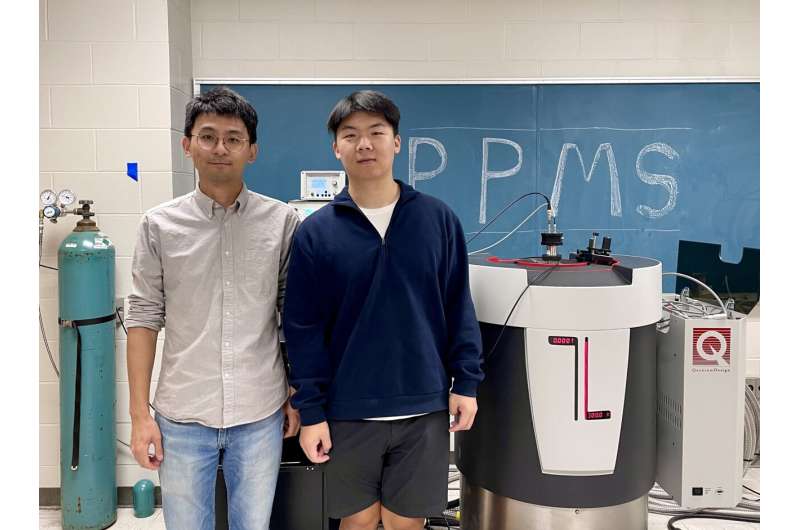This article has been reviewed according to Science X's editorial process and policies. Editors have highlighted the following attributes while ensuring the content's credibility:
fact-checked
trusted source
proofread
Team discusses the blueprint for ultrafast spintronics

Assistant Professor Wencan Jin and his team at Auburn University's Department of Physics are pushing the boundaries of technology with their latest publication on spin dynamics in two-dimensional (2D) van der Waals magnetic systems. Published in Physics Reports, this seminal review work delves into the nitty-gritty of magnetic behaviors and their ultrafast dynamics in atomically thin materials, exploring its transformative potential for next-generation technology.
Since graphene burst onto the scene in 2004, the realm of 2D materials has been a hotbed of research. But the game-changer came in 2018 with the emergence of 2D van der Waals magnetic materials. These materials are more than just flat; they have unique magnetic properties that could redefine our technological capabilities.
"Our work presents an overview of the significant progress in probing spin dynamics of 2D magnetic materials. Moreover, we provide a roadmap for leveraging these 2D magnets in innovative applications, from ultrafast data storage solutions to revolutionary communication devices," says Prof. Jin, who also serves as an Adjunct Assistant Professor in the Department of Electrical & Computer Engineering at Auburn University. His group carries out ferromagnetic resonance experiments to study spin dynamics using the Physical Property Measurement System (PPMS).
What sets this research apart is its in-depth focus on spin dynamics—the study of how electron spins behave in these new 2D magnetic landscapes. Mastering spin dynamics is key to unlocking groundbreaking technologies like spin tunnel field-effect transistors and spin-filtering devices. These technologies could pave the way for faster, more energy-efficient computing and data storage systems, revolutionizing everything from smartphones to quantum computing.
The study was a global effort, including contributions from Prof. Wei Zhang at the University of North Carolina, Prof. Chunhui Du at the University of California San Diego, and top-tier researchers from South Korea, Japan, and the UK. The team thus has experts in theory, spectroscopic characterization, device fabrication, and transport measurement. Together, they have compiled a treasure trove of insights that could serve as a blueprint for the technological landscape of tomorrow.
More information: Chunli Tang et al, Spin dynamics in van der Waals magnetic systems, Physics Reports (2023). DOI: 10.1016/j.physrep.2023.09.002
Provided by Auburn University



















